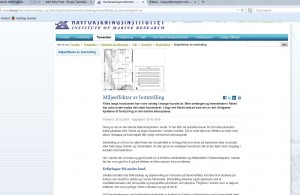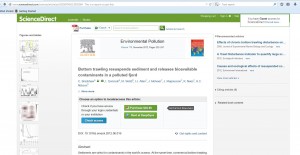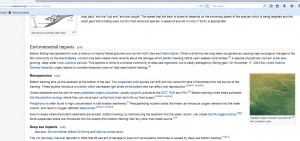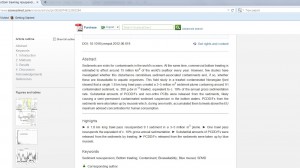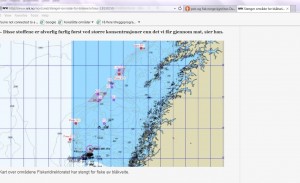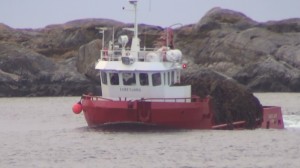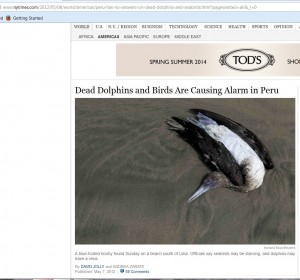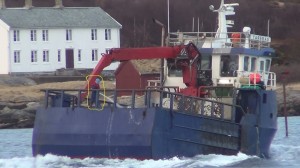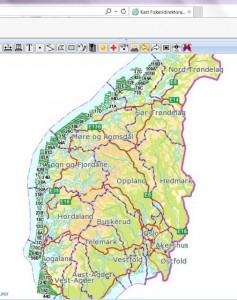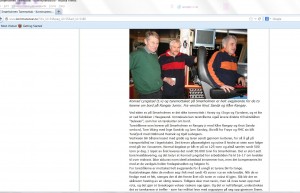The Norwegian coast is a marvelous habitat, full of inlets and fjords – however the activities of business has begun to have a serious impact.
Our Marine Biologists are paid to research the impact of such industries as Seaweed trawling and fish farming. Without positive results those industries would be shut down, or would they??
One burning issue that is beginning to appear now is that of regulatory capture – that is where the regulators later become involved in the businesses they were supposed to regulate.
The worst example is Fukushima – the worlds worst nuclear disaster the effects of which will be felt all over the world as the cancer rates begin to rise. It appears that the regulators were all promised and got jobs in the nuclear industry – the promise of a top job and excellent pay may be enough – an article from the BBC outlining this
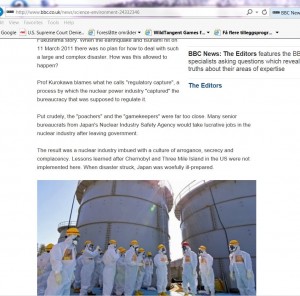
So it appears that many of the leaders in Norway’s seafood industry have the same kind of background – for instance the man responsible for taretråling on the Norwegian coast was a regulation enforcer for the fiskeriedirektoratet for nearly 12 years.
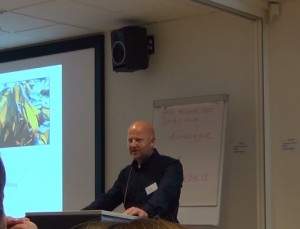
Does this mean that reports are being falsified or research not properly conducted???
Without any clear documented proof i would not like to say one way or the other but it is clear that there can be and is a conflict of interest.
I think an interesting demonstration of this of this is the ex fisheries minister Elisabeth Berg-Hansen.
https://en.wikipedia.org/wiki/Lisbeth_Berg-Hansen
Essentially she is the deputy chairperson of the havsforskningsinstitut, one of the organizations charged with overseeing the state of our oceans.
She also according to the wiki article ( sits at the top of all the health advisory committees as well as all related research institutes)
Here is an article from the uk daily mail (you need to double click on the jpeg to read it) but essentially it says that an article in the American journal science suggested that farmed salmon from Scotland and Norway is so full of toxic chemicals that it should not be eaten more than once in 4 months – more frequently and it could lead to significant neurological damage and cancer. I dont think it can be plainer than that.
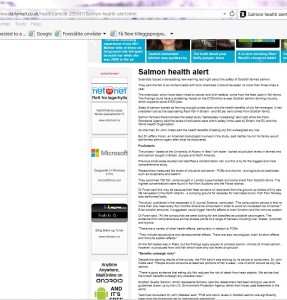
Now this is quite interesting but there is far worse – one of the chemicals used in fish farming in Norway is called diflubenzuron,
This is apparently regularly used around the fish farms here, is what a Norwegian fish farmer has to say about it (double click on the image to read it)
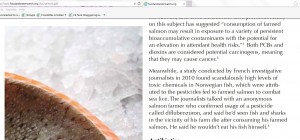
Here is what the Canadian government has to say about Diflubenzuron It also says it should not be used near water or waterways – in Norway it is used in the sea – how can this be???
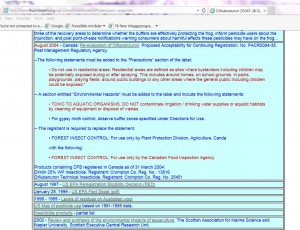
The eec also has something to say and its fuzzy as hell – not surprising really – however there are many other chemicals now in farmed salmon used by desperate salmon farmers, many are banned and considered dangerous by other countries but not Norway – could it be because we have powerful politicians directing our health and research institutions??
Apparently Miljøvernforbund felt this too and here is a little snip from the wiki article

(Again double click to read)
The really interesting part of the various articles is this – because the salmon are being fed animal material from other parts of the north sea many are full of pollutants already and thus are concentrated in the fish – heavy metals, pcbs and many other nasties.
Here is a last little snip about what is the result of this concentrated fish rearing.
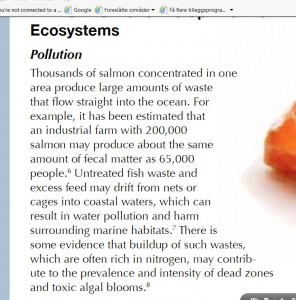
Should we be worried about dead zones, after all they are growing and multiplying rapidly – naaah, it wont effect us for a while(of course when it does its another matter) no its the toxic algal blooms that should set the heart racing and worry the fish farmers – apparently the toxins become airborne under certain conditions – that means you’re actually breathing in a neurotoxin – from spray, mist or possibly even rain – so that essentially means you would get poisoned by going outside your home – can this be true???
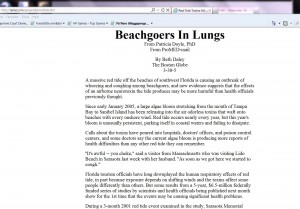
This is from an American newspaper and gives you facts.
So now we have really dangerous chemicals being added to the feed and water of farmed salmon okayed by a lady who sits on all the important committees, was the state secretary for fisheries and runs the biggest fish farming business in Norway – well there is far more to come –
Here is a very interesting document/book, it is called FOOD FROM THE OCEAN – Norway’s opportunities. http://novus.mamutweb.com/Shop/Product/GrueAlm%C3%A5s-%28Eds%29-Food-from-the-Ocean/102623
I find the initial premise a little frightening – by the year 2050 Norway should be feeding the world – it talks about exploiting marine resources —-
“Norway can indeed take the global lead in demonstrating best practices in economically and environmentally sustainable ways ” (of aquaculture production.)
A Norwegian led initiative is the European Joint program initiative for research on healthy and productive oceans – this sounds a great idea and something very valuable to our ecosystems – but apparently it is for the coordination and a greater degree of cooperation between the various research communities in Europe – further it says there are major benefits to be gained from the sharing of equipment and data.
This sounds very laudable but it also means the lowering of the potential damage independent research can do to a carefully structured story. i.e. someone comes up with some research the results of which are contrary to your commercial interests you can do something about it.
This pdf document is quite interesting as it is a serious study of some of the chemicals used in salmon farming – it mentions pollution from copper and zinc under the salmon farms from the compounds used in anti fouling (i do know that some salmon farms have robots for cleaning the cages and nets and they are used continuously) But no mention of the cadmium found in crustacea near to Elisabeth Berg-Hansens farms nor the use of diflubenzuron,
CHEMICAL USE IN SALMON AQUACULTURE: A REVIEW OF CURRENT PRACTICES AND POSSIBLE ENVIRONMENTAL EFFECTS Here is the document in its entirety —–
32bfe50e457fb45a03
On this website I have put links to documents demonstrating that all is not well with our seas – that all is defiantly not well with our leaders who are allowing some very desperate activities to take place – all in the interests of income – what I would dearly love is for someone to write to me and say – this document, or that document is wrong – INCORRECT – my conclusions are wrong – I want to be wrong – I would love to drop this campaigning as it does not earn me anything . I know this site is well read so I can only conclude that I am not wrong, that my information is correct.
